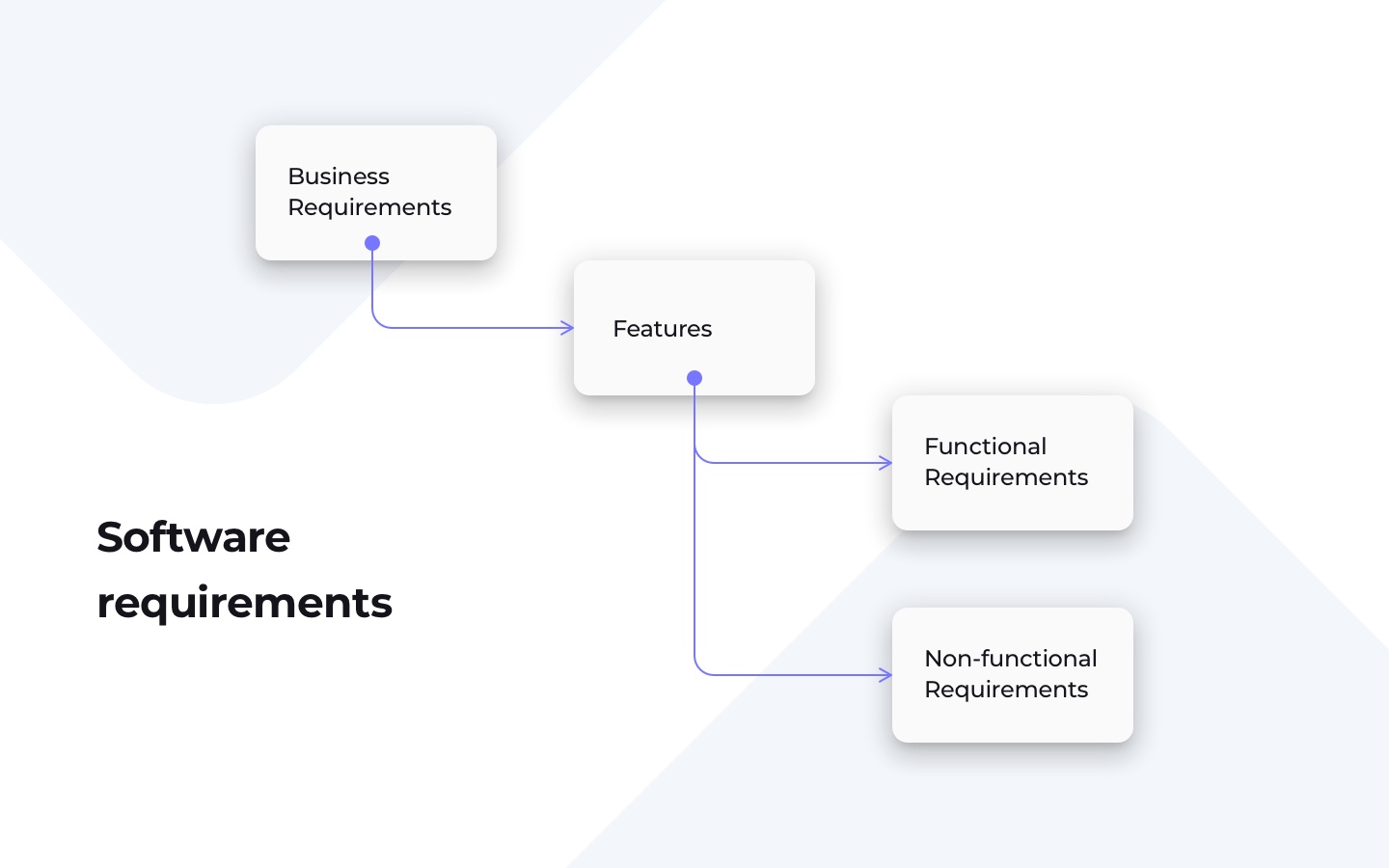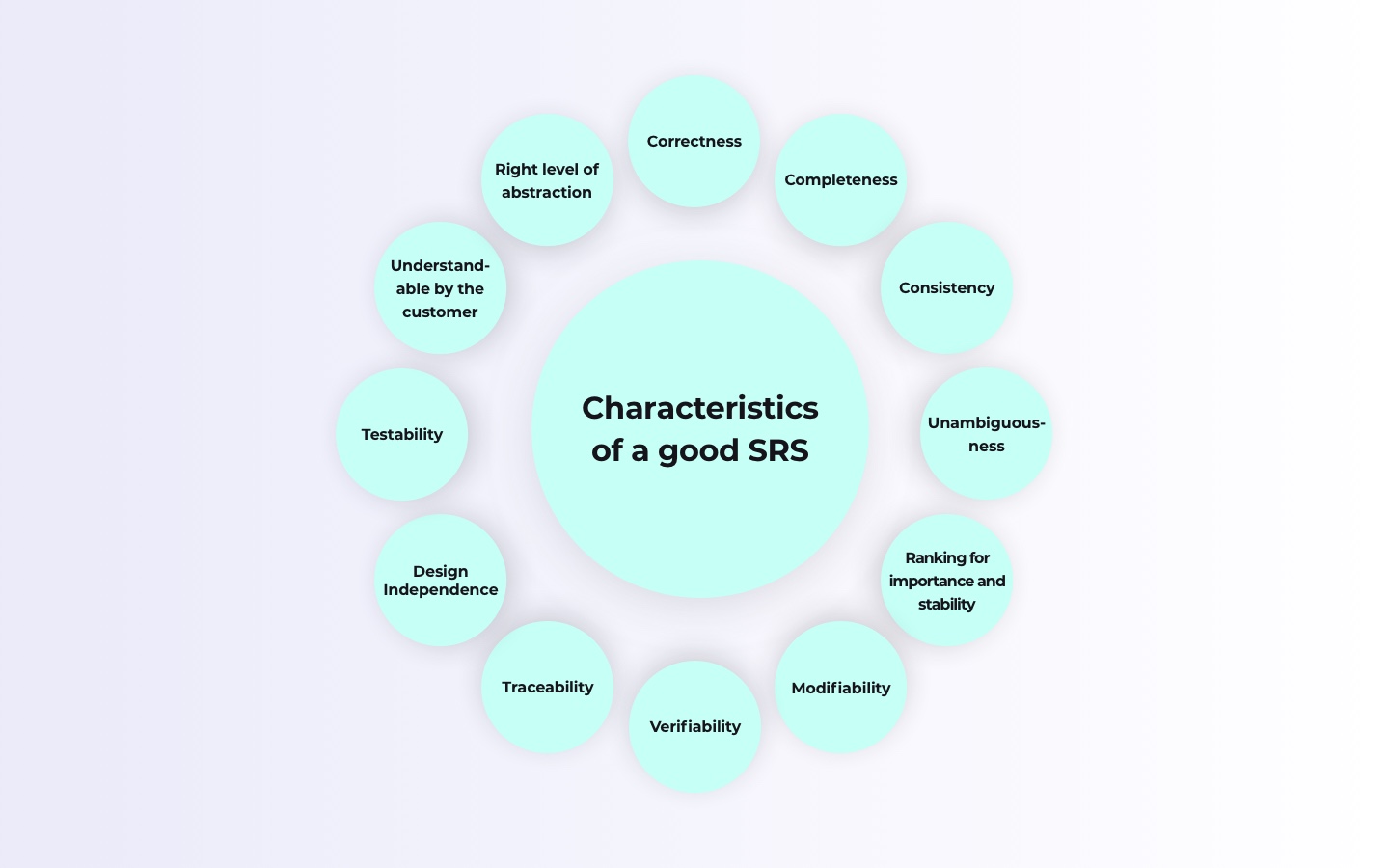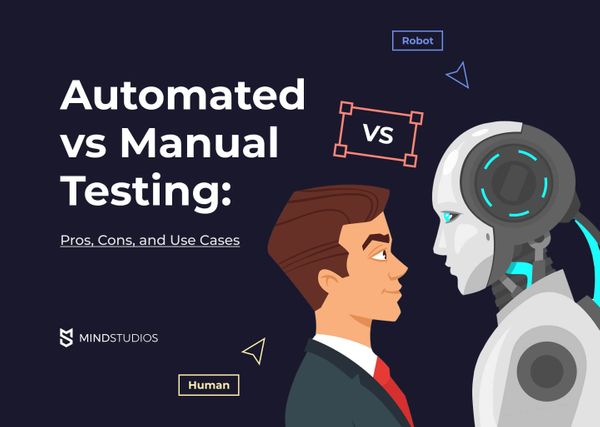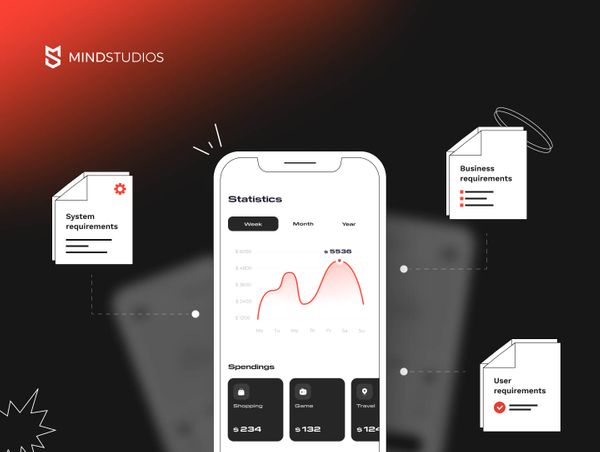
In this article, we go over the importance of requirements in software engineering and reasons why neglecting the requirements stage isn’t a wise idea when building an app.
"Working software over comprehensive documentation." This is a part of the Agile Manifesto.
On the surface, this statement may seem to imply that requirements are inconsequential and not worthy of the time. Some developers and their clients forego proper documentation. But that’s a mistake.
Let’s start with a little explanation of what requirements are in terms of software development.
What are the requirements in software engineering?
It’s not like the definition of requirements changes significantly when applied to software development. Requirements simply specify what features a product should include and how those features should work. How you approach them is what’s important.
Gathering and analyzing requirements is one of the initial stages in the software development process in Agile and Waterfall methodologies alike. During the requirements phase of the idea validation stage, an agreement must be reached between the client and the developer as to what exactly the final product should do and how. The good requirements in software engineering are usually quite detailed.
How to define requirements in software engineering?
There can be several types of requirements in software engineering.
Business requirements in software engineering
Why do the different client types need the app? At a glance, this information may appear unnecessary or even redundant. After all, you have a client who wants to pay you to build an app. Why should you care about their reasons?
Well, if you take pride in what you do and you strive to build quality products, you should care about the whys as much as you do about the whats and the hows.
The importance of business requirements is that they provide a vision of the final goal. With the goal in sight, developers can set priorities. They can also apply their expertise to offer better solutions to reach these goals. There’s a reason why business analysis is included in the development process at most companies.
Without clear business requirements, poor decisions can be made. Decisions that will slow down development, disrupt deadlines, and result in additional development stages.
Software requirements

There are two types of requirements in software engineering: functional and nonfunctional. In simple terms, the distinction is as follows:
Functional requirements are the what requirements — What is this system designed to do? As the name suggests, they describe the functionality of the software.
Nonfunctional requirements are the how requirements — How will this system do what it’s designed to do? These requirements describe how each feature should behave under what conditions, what limitations there should be, and so on.
The two go hand-in-hand. Nonfunctional requirements complement and define functional requirements. For example, let’s imagine we’re making a messaging app.
The main functional requirements, in this case, would be:
- The app must be able to send messages.
- The app must support file and media transfer.
- Etc.
These are pretty straightforward, and it’s easy to understand why functional requirements are important: they outline the functionality. In this example, the nonfunctional requirements might be as follows:
- The service must offer full functionality in all major browsers: Microsoft Edge, Google Chrome (latest two versions), Mozilla Firefox (latest two versions), Opera, Safari (latest version).
- Mobile layouts must be supported.
- Etc.
As you can see, functional requirements are basically a list of functionality that must be included in the system. On the other hand, nonfunctional requirements are specific. They’re necessary in order to define the development and testing conditions.
It’s true that the iterative Agile process entails the possibility to introduce changes at any stage of development, but that doesn’t imply foregoing requirements altogether. You just need to make them flexible.
Without precise parameters specified, it’s impossible to understand whether a feature is designed exactly as it should be.
Requirements must be thoroughly analyzed and documented. Why? Because so many things can go awry if they aren't.
The Damocles’ sword of undocumented requirements

The importance of requirements in software engineering is best understood by quality assurance specialists. When project requirements are not laid out properly, QAs receive the biggest blow. Imagine trying to determine if software is implemented correctly without clear guidelines on what it should do and how it should do it. It’s total madness.
However, this issue doesn’t only affect testers. Having no official specifications means the following:
- There’s no clear understanding as to what constitutes a finished product or even feature.
- The client doesn’t know what to expect by the end of development and what they’re paying for.
- Developers are left hanging, having to figure out the specifics of features based on what was said and how they themselves understood it.
- Bugs. They’re everywhere.

Undocumented software requirements lead to miscommunication on all sides. It’s not at all rare that a client and a developer understand the same terms differently. Especially so if we’re talking about an outsourcing website development company that’s not intimately acquainted with the customer’s business.
Miscommunication, in turn, lays a straight path to constant rework, changes, and bug fixes. There’s a chance everything will go as planned without documented requirements, but it’s slim. Usually, this chain ends with disrupted deadlines and costs that go through the roof.
To ensure smooth project development, all parts of the product and the process of its development must be understood by every team member in the same way. To ensure that developers see each feature of the product exactly as the client does, a software requirements specification (SRS) in software engineering is made.
The devil is in the details: What makes a good software requirements specification?
Now, the actual software requirements specifications can be exceptionally detailed or can be just an outline of features. The level of detail depends on a number of factors.
High-quality software requirements are easily understood by everyone involved in the project. This includes the client, who may or may not be well-versed in technical aspects. Some companies demand an exceptionally technical and detail-heavy list of requirements, while others prefer requirements in layman’s terms.

Regardless of how tech-filled your documentation will be, there are general rules for managing software requirements. There’s even an official standard: IEEE Std 830-1998, “Recommended Practice for Software Requirements Specifications.” Here’s what a good SRS should be, according to the standard:
Correct. This one’s easy. The correctness of the SRS is verified by the customer and developer based on the agreement they have. The SRS should conform to the technical specifications and all other governing project documentation.
Unambiguous. One of the main purposes of an SRS is to eliminate miscommunication. That’s why every requirement specification must be written to have only one possible interpretation. It’s not unusual for an SRS to include a glossary.
Complete. The more complex the application, the more detailed the SRS needs to be. A complete SRS covers every side, from performance requirements to functionality. It also sets certain limits to design. However, it never specifies an exact design. It only offers parameters.
Consistent. Internal consistency means that no statements in an SRS contradict other statements in the same SRS. This is another reason to include a glossary — so that any object, process, and specification within the document is designated with a precise term.
Ranked for importance and/or stability. In most cases, there are must-have requirements and would-like requirements. It’s important for software requirements specifications to clearly label both types. This will help developers and project managers when they create a step-by-step plan for the project.
Verifiable. There must be a way to test each requirement you include in the SRS. To be considered verifiable, requirements in software development must contain measurable and concrete concepts.
Modifiable. This refers to the SRS structure. In order not to disrupt the project workflow when you need to implement changes, the SRS needs to be clear and easy to change, and the requirements should not be repeated.
Traceable. It should be easy to identify the source of each requirement set out in the SRS.
These are recommendations. In reality, companies can forego some of these points depending on the project, the client, and the team. But it’s always good to have some guidance.
Requirements are handy whether you’re specializing in iOS and Android application development or web development. They’re general-purpose documentation. And how they look is generally up to developers and their clients.
Since an SRS should be easy to understand for all parties involved, the best way to design them is also debatable. Some prefer tables, some prefer lists. There are developers who prefer their specifications in visual form as data flow diagrams and charts. There’s no single right way to make a requirements specification document.
Importance of Requirements In Software Engineering: Conclusion
Here are the most common points when software requirements come in handy:
- Understanding the goal
- Estimating development costs
- Creating a comprehensive schedule
- Setting priorities
Whether to document requirements is something every developer decides for themselves. And the value of requirements varies depending on the scale of the project. At Mind Studios, we prefer to have things in order, so we document all requirements. If you’re interested in how we do it or have questions about the value of requirements in general, hit us up via our contact form.










